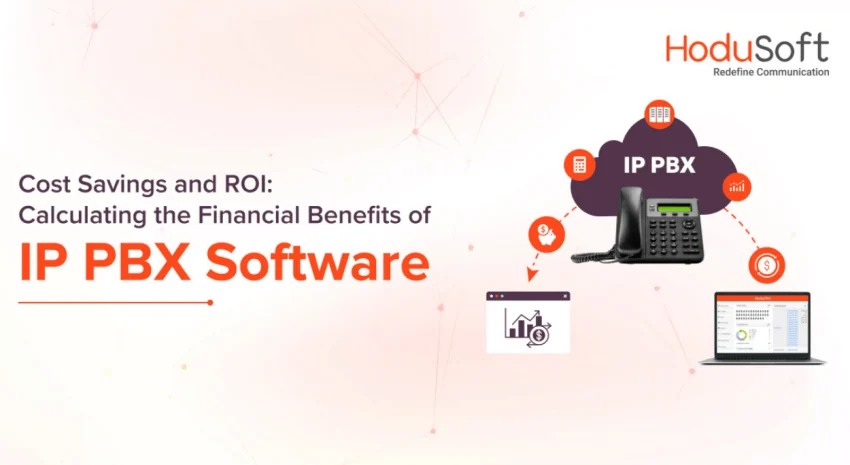Just imagine you check in at a five-star hotel and a few hours later you need to order room service. What would you do? Just pick up the intercom in your room and press a button for room service. The system that you use is nothing but an IP PBX (Internet Protocol Private Branch Exchange) system.
IP PBX software has gained significant traction in recent years for its ability to provide cost-effective telecommunications solutions within businesses as well as beyond. If you take a look inside any industry, you will find that most of the leading businesses leverage IP PBX systems to optimize their inter- and intra-department collaboration and customer service operations as well as significantly reduce communication costs.
That’s why it’s not surprising to see the growth of the IP PBX software market. As per a report released by Future Market Insights, the demand for IP PBX is likely to grow at a compounded annual growth rate of 10.4 percent between 2023 and 2033. The international IP PBX market is valued at USD 30,821.3 million in 2023 and it is projected to surpass USD 83,146.8 million by 2033.
This blog post explores how IP PBX software can help organizations save money and give a great return on investment (ROI). Read on and know the different ways IP PBX systems are worth every cent you invest in them.
1. Reduced Hardware Costs
One of the biggest cost savings of IP PBX software is due to zero hardware costs. Yes, that’s correct. The IP PBX phone system is extremely light on assets and hardware. That means it’s just plug-and-play. By using sophisticated IP PBX software, you simply need virtualized servers that are extremely affordable and easy to maintain.
According to a Gartner study, businesses can see an average cost saving of 50 to 75% as they switch to VoIP. The same study also found that 82% of companies report a cost saving when moving to the cloud. IP PBX software leverages VoIP technology, allowing for cost-effective long-distance and international calls. Businesses can significantly reduce their phone bills by routing calls over the Internet, especially if they have remote or international offices.
2. Scalability
Scalability is a critical factor when it comes to selecting a software solution. That is because customer service operations, like all other business operations, do not remain constant throughout the year. In peak seasons, it needs more agents and customer support representatives to handle the operation. In lean season, it requires fewer agents and customer support representatives to do the same.
That’s where sophisticated IP PBX software comes into the picture. IP PBX software is highly scalable, it can easily scale up or down based on your business’s needs. You can add or remove users without the need for costly hardware upgrades or replacements. Adding new phone lines or extensions is typically a software configuration change. This ensures that you only pay for what you use.
3. Remote Work Efficiency
As per Pew Research Center’s survey on remote workers from February 2023, almost 35% of US employees work remotely all the time and at least two-thirds of American workers work remotely at least part-time. After the COVID-19 pandemic, remote working has become the norm rather than an exception. The rise of remote work has made IP PBX software even more valuable.
This trend underscores the growing importance of tools like IP PBX software in facilitating efficient remote work. Employees can make and receive calls from anywhere with an internet connection, eliminating the need for dedicated phone lines or cell phones for work purposes.
4. Integration with Third-Party Platforms
IP PBX software often integrates with other collaboration tools and unified communications platforms, streamlining communication and reducing the need for separate solutions.
A survey conducted by TechTarget found that 82% of businesses that adopted IP PBX systems reported improved efficiency in their communication workflows due to seamless integration with third-party applications.
5. Lower Maintenance Costs
A study conducted by CompTIA found that businesses that transitioned to IP PBX systems experienced an average reduction of 30% in their annual maintenance costs compared to traditional PBX systems, largely due to the ability to perform updates and troubleshooting remotely.
IP PBX software typically requires less maintenance than traditional PBX systems. Software updates and troubleshooting can be done remotely, reducing the need for on-site technicians and associated costs.
6. Omnichannel
IP PBX systems are considered the bedrock of unified communication. Some advanced PBX solutions offer features such as:
- Voice log
- Video calls
- Speed dial
- Click-to-call
- Voice mail
- Call forwarding
As IP PBX software handles multiple communication services, consolidating these services into one platform can reduce costs associated with managing multiple vendors and services.
According to a survey by Osterman Research, 68% of businesses reported significant cost savings from consolidating their communication services onto a single IP PBX platform, with an average reduction of 25% in vendor-related expenses.
7. Softphone Technology and Energy Efficient
IP PBX lets you use softphone technology, which requires no additional device for making calls. You can simply use your computer or IP phone to dial the customers directly. All business communication and collaboration features are offered in a single PBX system.
Apart from that IP PBX communication systems are extremely energy efficient. As IP PBX systems are software-based, they tend to be more energy-efficient than hardware-based PBX systems. This can result in lower electricity bills and reduced environmental impact.
8. Vendor Negotiation
Did you know what Gartner’s top strategy for software cost reduction is? It’s vendor negotiation. A recent research article by Gartner titled “How Should Executive Leaders Strategize Vendor Negotiations to Combat Inflation?” highlighted the strategies of vendor negotiation.
If you handpick the right IP PBX software provider, then negotiating and restructuring your contracts will be extremely easy. A reliable and reputable vendor will value your relationship with them and go out of its way to ensure your financial health is intact or improved.
The article rightly points out that one negotiation process doesn’t fit all vendors. That’s why you need to have a robust understanding and trust your vendor. If you are partnered with the right vendor, you can uninhibitedly ask to restructure contract terms. If you pay annually, request them to pay in three or six-month installments.
Steps to Evaluate the Cost-Effectiveness of IP PBX
To evaluate the cost-effectiveness of IP PBX integration with cloud services, you need to:
Define your goals and objectives: In this stage, consider how your business’s goals and objectives align with your business strategy and vision. How you will measure success and performance.
Assess your current situation: This step entails identifying the strengths and weaknesses of your existing communication systems. Also, find out the opportunities and threats in the market and industry.
Research your options: This requires you to look at the features and benefits of different IP PBX systems and cloud services, while also considering quality, reliability, compatibility, security, and support.
Partner with the right IP PBX solution provider: This is the most important step. If you handpick the right IP PBX software provider, it means that half of the battle is won.
Estimate your costs and benefits: This involves quantifying savings or earnings from productivity, efficiency, customer satisfaction, and revenue.
Calculate your ROI: This involves making assumptions and risks in calculations that must be validated.
Best Practices to Follow to Get the Most Out of Your IP PBX System
To ensure that you get the most out of your IP PBX system and cloud service, you should follow some best practices that can help you achieve your goals and objectives. Here are some of them:
Plan: Plan and make sure that you have a clear and realistic plan that covers your scope, timeline, budget, resources, roles, and responsibilities.
Get stakeholders’ buy-in: Communicate this to stakeholders and get their buy-in. Conduct a pilot or trial run with a small group of users to collect feedback.
Test and check for errors: Test and troubleshoot the system before going live. Check for errors, bugs, glitches, or compatibility issues and fix them accordingly.
Focus on robust security: Secure and backup your data with encryption, authentication, firewall, antivirus, etc., and store it in a safe location. Have a contingency plan in the event of an emergency.
Make sure your IP PBX system is up-to-date: Keep your system up to date with the latest software and features. Follow recommendations from your provider and take advantage of any new or enhanced functionalities that can benefit your business.
Conclusion:
IP PBX software offers a compelling business case for organizations looking to save money and enhance their communication capabilities. By reducing hardware costs, lowering telecommunication expenses, and providing flexibility for remote work, IP PBX software can result in significant cost savings.
Calculating the ROI allows businesses to quantify the financial benefits and make informed decisions about its adoption. As technology continues to evolve, IP PBX software remains a valuable asset in driving cost-efficiency and productivity for modern businesses.







